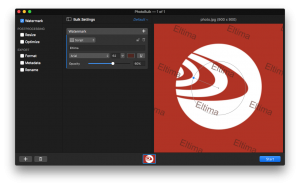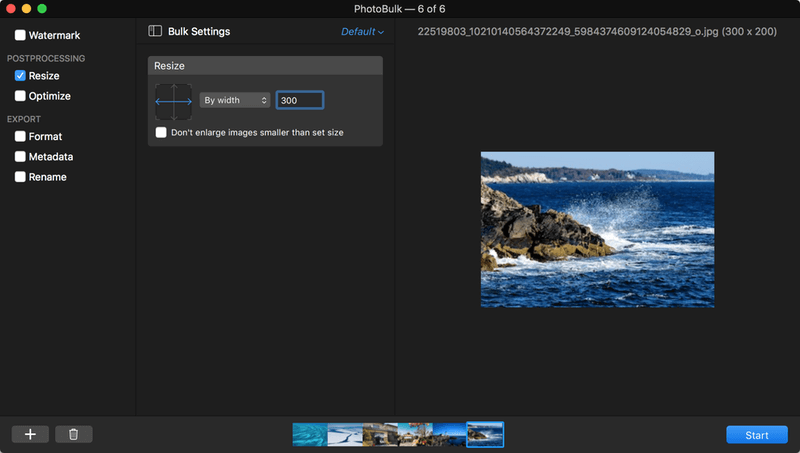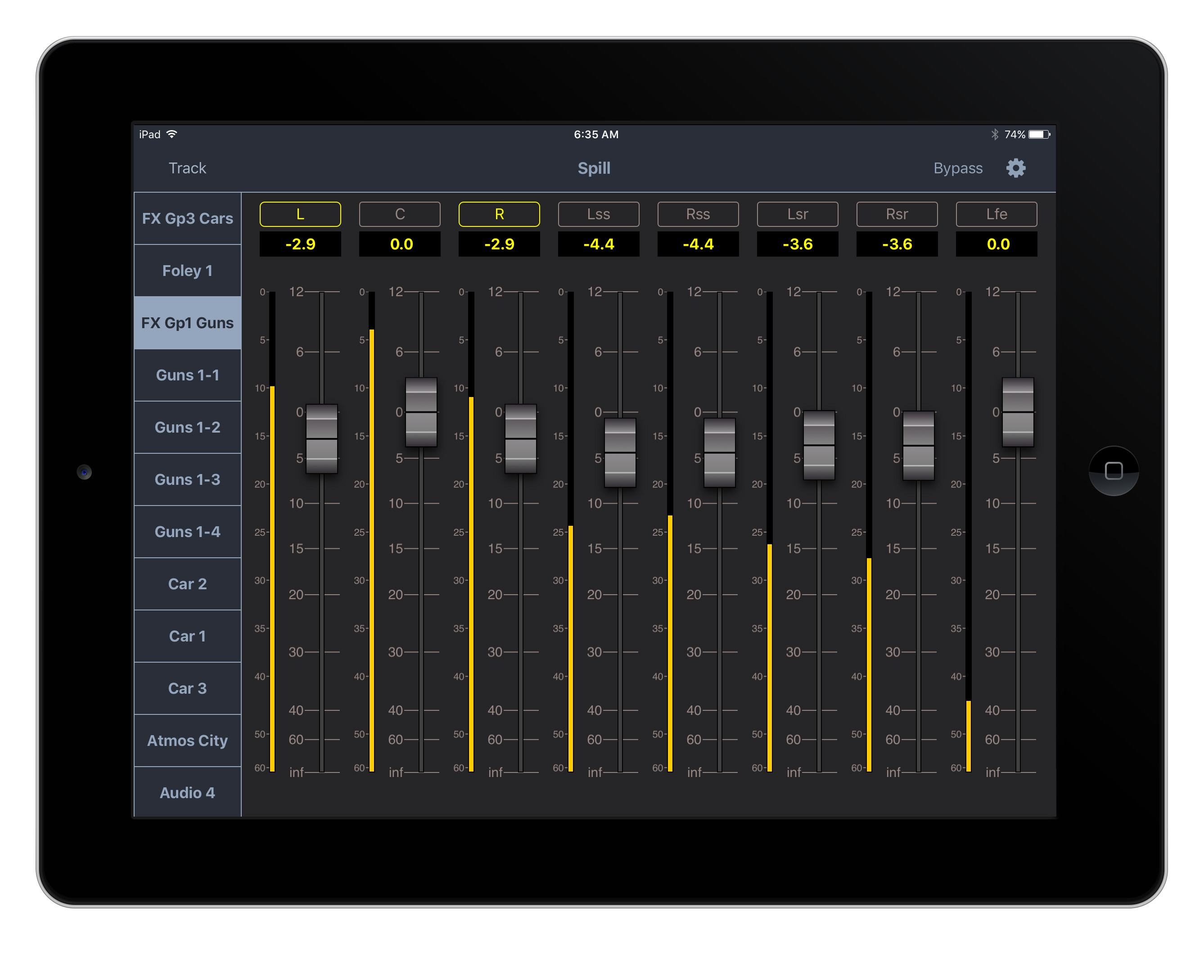

I typically will resize on export from Photos or Mylio and just use this for watermarking, but there are times when I want to resize or compress an image too. This is not necessarily how I would normally use the App though. You can see some artefacting on the skies. I normally would use the lower setting for this, but I wanted to demonstrate it at medium. The resulting files are very small, with some at just 150k for 2400px wide images. For seven images it took approximately 7 seconds. This resizes to 2400px wide, adds a watermark and optimises the Jpeg with optimal optimisation setting (middle). Then I brought them into PhotoBulk and applied my standard settings.
Photobulk plugin full#
To demonstrate, I took some images which I had on my Lightbox in Mylio and exported them at full resolution jpegs from the software. It will batch process a group of images in seconds rather than minutes. This may sound long winded and a bulky workflow (pardon the pun) but it’s not. I’ll then run them through it and into the folder I’m using for that blog post.

By setting up a preset, I create a temporary folder into which I export from either Mylio or Photos, and then I have a preset set up with my favourite settings in Photo Bulk. The same can be said of working with Photos. I use Mylio as my main library, and one of the problems I have with it is the lack of graphical watermarks, which I need to use when prepping images for use on the blog. As anyone who regularly reads this blog knows, I like to work with lots of different software, and not just Lightroom. The app has actually plugged a hole in one of my workflows. The only issue I’ve found is that you can get some banding on gradients and skies, especially if you use the maximum setting, and you can see that to an extent on the image samples below (which are pretty much worst case scenarios). Some of the reviews on the App store are claiming that it’s making images soft, but I haven’t seen that in any of my tests. If you zoom in you can see some jpeg artifacts alright, but this is to be expected. This reduced the image size in half, without a massive reduction in quality. I tested it on some pictures, and without doing anything else, just set the optimisation to max. The image quality of the optimisation seems pretty good. You can preview the results before setting off a batch. Optimisation will increase compression and so on. Watermarking lets you use a graphic or a text watermark, and it also gives you the option of setting opacity, position and so on. Turning a feature on or off, expands or contracts the interface with the options for that function. These are "Watermark", "Resize", "Optimise" and "Rename". You have an area where you can drop images, and below that are four options which can be enabled or disabled depending on what you want to do. The interface is relatively straightforward.
Photobulk plugin software#
One of the other things that I like about it is that it can optimise PNG files, which is a very useful function, as PNGs from some software are often larger than they need to be.

You can also save presets of settings for use in the future. While there are lots of apps out there that can do this, what I like about Photo Bulk is that it’s very small and very fast. With it, you can resize, optimise, and add a watermark to an image or group of pictures. It’s one of those things that “does what it says on the tin”. It’s very small, both in terms of physical size and also in terms of resource footprint. The app is basically a little batch processor for images. It’s called PhotoBulk, and it’s from Eltima Software. Recently the developer of one such utility which I hadn’t used before asked me if I’d be interested in reviewing it, and I’m glad he did, as it’s turned out to be a very useful little application.

I use a lot of these tools, and they’ve become a vital part of my photo blogging workflow. One of the things that I love to do for my writing and blogging is to use small and useful little apps from independent developers.


 0 kommentar(er)
0 kommentar(er)
